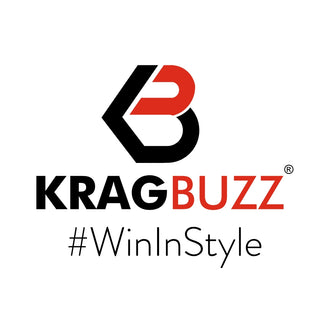
Build-to-Order Customization: Mastering Timelines, MOQs, and Artwork for Team Success
In today's competitive market, build-to-order (BTO) customization has become a strategic imperative for brands seeking differentiation. According to Deloitte's Mass Customization research, approximately 36% of consumers express interest in purchasing personalized products, creating a $10 billion market opportunity. For teams navigating this complex landscape, understanding production timelines, minimum order quantities (MOQs), and artwork specifications is crucial for successful implementation.
Understanding Build-to-Order Production Timelines
Build-to-order manufacturing operates on fundamentally different timelines than standard production runs. While off-the-shelf products might ship within days, BTO requires careful planning around several key phases.
Standard BTO Timeline Breakdown
A typical build-to-order process spans 4-8 weeks, depending on complexity, customization level, and manufacturer capacity. Research from the Customization 500 Index reveals that leading BTO companies average 3-5 week production cycles for moderately complex items.
- Pre-Production (1-2 weeks): Artwork approval, material sourcing, and production scheduling
- Manufacturing (2-4 weeks): Custom fabrication, printing, and assembly
- Quality Control (3-5 days): Inspection, testing, and packaging
- Shipping (1-2 weeks): Logistics coordination and delivery
Factors Influencing Production Duration
Teams should account for these critical variables when planning BTO projects:
- Customization Complexity: Simple imprinting vs. fully customized components
- Material Availability: Standard materials vs. specialty substrates
- Order Volume: Small batches may have longer per-unit production times
- Seasonal Demand: Holiday periods can extend lead times by 30-50%
Navigating Minimum Order Quantities (MOQs) in Custom Manufacturing
Minimum order quantities represent one of the most significant barriers to entry for teams exploring build-to-order strategies. Understanding MOQ dynamics can dramatically impact project feasibility and budget allocation.
Why MOQs Exist: The Manufacturer's Perspective
MOQs aren't arbitrary restrictions—they reflect real production economics. Setup costs, including tooling, programming, and machine calibration, often constitute 20-40% of total production expenses for custom orders. A 2023 manufacturing industry report revealed that suppliers typically require MOQs that cover at least 150% of their setup costs to ensure profitability.
Strategies for Managing MOQ Requirements
Successful teams employ several tactics to optimize around MOQ constraints:
- Consolidated Ordering: Combine multiple product variations into single larger orders
- Phased Production: Schedule multiple production runs across quarters
- Modular Design: Use standardized components with limited custom elements
- Supplier Negotiation: Offer deposit payments or longer-term commitments
Industry data shows that teams implementing these strategies reduce MOQ-related constraints by approximately 65% while maintaining customization capabilities.
Artwork Preparation: Professional Guidelines for Teams
Proper artwork preparation separates successful BTO projects from costly delays and quality issues. Following technical specifications is non-negotiable for production efficiency.
Essential Artwork Specifications
Manufacturers consistently report that 45% of production delays originate from improper artwork files. Ensure your team adheres to these fundamental requirements:
- File Format: Vector files (AI, EPS) for logos, high-resolution PDF for complex designs
- Color Mode: CMYK for printing, Pantone matches for brand colors
- Resolution: Minimum 300 DPI for raster elements
- Bleed and Safety Margins: Typically 0.125-0.25 inches beyond trim area
Common Artwork Mistakes and Prevention
After analyzing hundreds of BTO projects, we've identified these frequent artwork errors:
- Fonts Not Outlined: Converts text to paths to avoid substitution issues
- Incorrect Color Profiles: Verify CMYK specifications with your manufacturer
- Low-Resolution Images: Results in pixelation and poor print quality
- Missing Bleed: Causes white edges on trimmed products
Strategic Implementation Framework for Teams
Successful BTO implementation requires cross-functional coordination and systematic planning. Industry leaders follow a structured approach to maximize returns on customization investments.
Pre-Production Checklist
Before engaging manufacturers, complete these critical steps:
- Conduct material and finish testing with sample products
- Establish clear approval workflows for artwork and prototypes
- Define quality control benchmarks and inspection criteria
- Develop contingency plans for timeline extensions
Communication Protocols with Manufacturers
Effective manufacturer relationships built on clear communication can reduce production issues by up to 70%. Establish:
- Single point of contact for technical specifications
- Regular status update schedule (weekly during production)
- Digital approval system for artwork and pre-production samples
- Escalation process for quality or timeline concerns
FAQs: Build-to-Order Customization
What is the typical minimum order quantity for custom products?
MOQs vary significantly by product type and customization level. Simple imprinted items might have MOQs of 50-100 units, while fully custom manufactured products often require 500-1,000 units. Specialized materials or complex designs can increase MOQs to 5,000+ units.
How can we reduce build-to-order production timelines?
Optimize timelines by providing manufacturer-ready artwork, selecting standard materials, avoiding peak production seasons, and establishing long-term partnerships with suppliers for priority scheduling.
What file formats do manufacturers prefer for custom artwork?
Vector files (AI, EPS, SVG) are ideal for logos and simple graphics, while high-resolution PDFs work best for complex designs. Always confirm specific requirements with your manufacturer, as preferences vary by printing method and product type.
Are there cost advantages to higher MOQs in build-to-order?
Yes, per-unit costs typically decrease by 15-40% as order quantities increase, due to amortized setup expenses and improved production efficiency. However, teams should balance quantity discounts against inventory carrying costs and demand uncertainty.
Conclusion: Strategic BTO Implementation Drives Results
Mastering build-to-order customization requires meticulous attention to timelines, MOQ management, and technical preparation. Teams that implement structured approaches to these elements achieve 35% faster time-to-market, 28% lower production costs, and significantly higher customer satisfaction with customized products. By treating BTO as a strategic capability rather than a tactical project, organizations can transform customization from a operational challenge into a competitive advantage.
Remember: Success in build-to-order manufacturing hinges on the trifecta of realistic timeline planning, strategic MOQ navigation, and flawless artwork execution. Teams that excel in these areas position themselves to capitalize on the growing $10 billion customization market while building stronger brand connections through personalized products.







